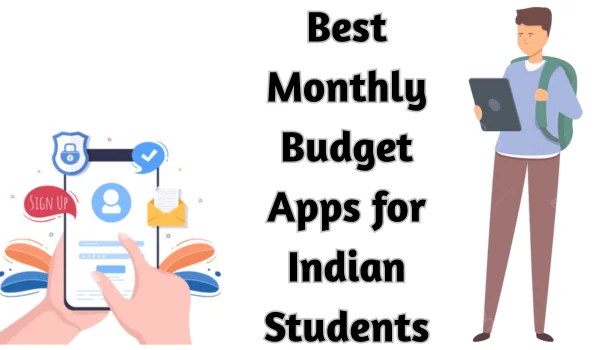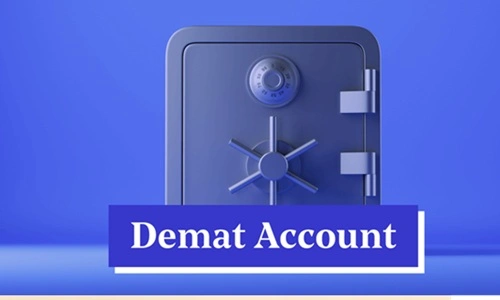Managing money as a student in India can be tough—limited income, rising expenses, and unexpected costs every month. That’s why having a good budget app is no longer a luxury—it’s a necessity. Whether you’re living in a hostel, paying PG rent, or just trying to save for your next smartphone, the right budgeting app can help you stay on track.
In 2025, Indian students have access to smart, AI-powered finance apps designed to track spending, set goals, and save money easily. In this article, we list the best monthly budget apps for Indian students, with pros, cons, features, and why they’re worth downloading.
🎯 Why Budgeting is Important for Students
- Helps avoid overspending
- Builds early financial discipline
- Tracks small daily expenses (tea, snacks, UPI transfers)
- Prepares you for emergency needs
- Encourages saving habits
📱 Top Budget Apps for Indian Students in 2025

Here’s a handpicked list of the best monthly budgeting apps:
| App Name | Best For | Free Version | Platforms |
|---|---|---|---|
| Walnut | Auto expense tracking via SMS | ✅ | Android |
| Money Manager | Simple offline budgeting | ✅ | Android, iOS |
| Goodbudget | Envelope-style budgeting | ✅ | Android, iOS, Web |
| Monefy | Quick expense input & charts | ✅ | Android, iOS |
| Fudget | Minimalist budgeting | ✅ | Android, iOS |
| YNAB | Pro-level budgeting | ❌ (Paid) | Android, iOS, Web |
| ET Money | Smart savings + investment | ✅ | Android, iOS |
🧾 1. Walnut – Smart Expense Tracker
Walnut is one of India’s most popular personal finance apps. It auto-reads SMS messages from banks and credit cards to track expenses without manual input.
Top Features:
- Automatically tracks UPI, debit card, ATM withdrawals
- Monthly spending chart
- Budget limits with alerts
- Splits bills with friends
- Tracks bank balances
Why Students Love It:
No need to manually enter every chai or recharge—you can focus on studies while Walnut tracks your budget.
Drawback:
Not available on iOS.
📊 2. Money Manager – Expense & Budget
This Korean app is extremely popular among Indian students for its offline use and visual interface.
Features:
- Clean graphs for income/expenses
- Manual transaction entry
- Password protection
- Transfer tracking (e.g., wallet to bank)
Why Students Love It:
No internet needed. It’s fast, simple, and perfect for daily use.
Drawback:
Lacks automated features.
📦 3. Goodbudget – Envelope Budgeting System
If you’re someone who follows the traditional “envelope method” of budgeting, Goodbudget is your best digital companion.
Features:
- Allocate money into virtual envelopes
- Sync across devices
- Track goals (like saving for a laptop)
- View transaction history by category
Best For:
Students who want to plan rather than just track spending.
Drawback:
Manual entry required.
🔘 4. Monefy – Fast and Stylish Expense Manager
For students who want quick, 2-tap expense tracking and rich visuals, Monefy is a top choice.
Features:
- Intuitive charts
- Built-in calculator
- Category customization
- Sync with Google Drive
Why Students Love It:
Ultra-fast expense entry. Perfect for recording every tea or Metro ticket.
Drawback:
No SMS reading or automation.
📚 5. Fudget – Minimalist Budget Planner
If you’re looking for zero complexity, Fudget is perfect. No clutter, no ads, just budgeting.
Features:
- Add income/expenses instantly
- Mark recurring items
- Clean interface
Why Students Love It:
Great for those new to budgeting and don’t want too many features.
Drawback:
No analytics or graphs.
🧠 6. YNAB (You Need A Budget)
If you’re a serious planner or pursuing finance, this app teaches budgeting as a financial lifestyle.
Features:
- Rule-based budgeting (assign every rupee a job)
- Goal tracking
- Real-time sync across devices
- Tutorials & courses
Why Students Love It:
Ideal for students with part-time jobs or monthly income.
Drawback:
Paid app with a free trial. Might be too advanced for beginners.
💸 7. ET Money – Budget + Invest
While known for mutual fund tracking, ET Money also helps users track spending and budget smarter.
Features:
- Automatic expense tracking
- Investment portfolio integration
- Credit score tracker
- Insurance tools
Why Students Love It:
Great for financially aware students who are starting to explore SIPs and investment tools.
Drawback:
Requires KYC for some features.
📌 Which Budget App Should You Use?
| Type of Student | Recommended App |
|---|---|
| Total beginner | Fudget or Monefy |
| Wants automation | Walnut or ET Money |
| Wants visual clarity | Money Manager |
| Serious about planning goals | YNAB or Goodbudget |
| Uses shared expenses often | Walnut (Split feature) |
📈 Tips for Using Budget Apps Effectively
- Update daily: Build a habit of entering expenses every night.
- Categorize smartly: Use proper tags like food, travel, bills, etc.
- Set spending limits: Fix weekly limits per category.
- Use reminders: Many apps let you set bill reminders.
- Review monthly: Use the first Sunday of every month to analyze trends.
🧠 Benefits of Budgeting as a Student
- You’ll spend smarter, not harder.
- You’ll learn financial discipline early.
- You can save for goals (like trips, gadgets, or emergencies).
- You’ll build strong habits for future salary/income management.
✅ Conclusion
Budgeting isn’t about being cheap—it’s about being smart. With the right budgeting app, Indian students in 2025 can track every rupee, avoid wasteful spending, and build financial habits that last a lifetime. Whether you’re a beginner or a finance enthusiast, there’s a perfect app for you in this list.
Start today—install one app, track for one month, and see the difference. Your future self will thank you.





